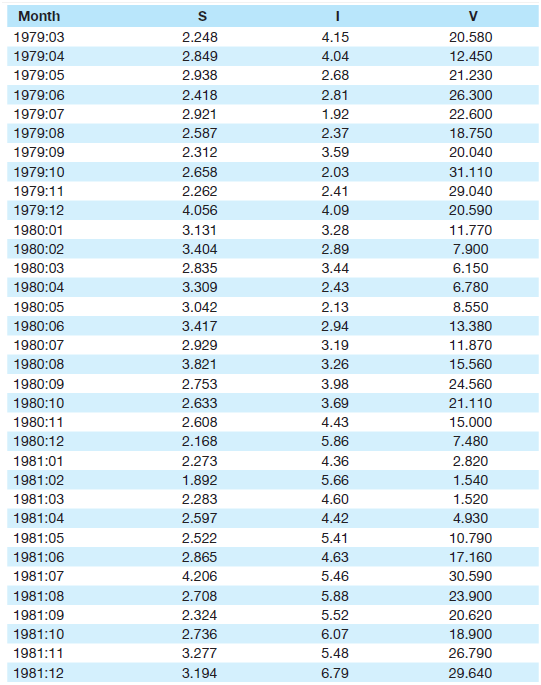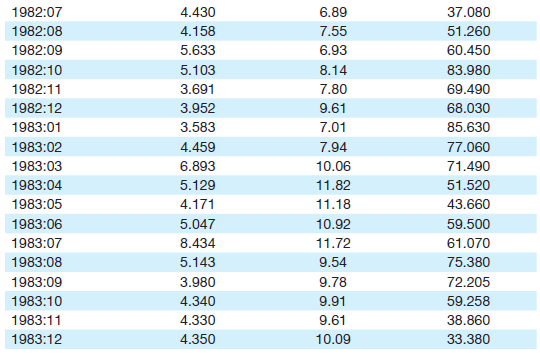Let's investigate the possibility of heteroskedasticity in time-series data by looking at a model of the black
Question:
Let's investigate the possibility of heteroskedasticity in time-series data by looking at a model of the black market for U.S. dollars in Brazil that was studied by R. Dornbusch and C. Pechman. In particular, the authors wanted to know if the Demsetz-Bagehot bidask theory, previously tested on cross-sectional data from the United States, could be extended to time-series data outside the United States. They estimated the following model on monthly data from Brazil for March 1979 through December 1983:
Where:
St = the average daily spread between the bid and asking prices for the U.S. dollar on the Brazilian black market in month t
It = the average interest rate in month t
Vt = the variance of the daily premium between the black market rate and the official exchange rate for the dollar in month t
a. Use the authors' data in Table 10.2 (datafile = BID10) to estimate Equation 10.22 and test the residuals for positive first-order serial correlation.
Table 10.2 Data on the Brazilian Black Market for Dollars
b. If serial correlation appears to exist, reestimate Equation 10.22 using GLS. Do the coefficient estimates change? Which equation do you prefer? Why?
c. The authors noted that S nearly doubled in size during their sample period. Does this make you concerned about the possibility of heteroskedasticity? Why or why not?
d. Test the residuals of Equation 10.22 for heteroskedasticity using the Breusch–Pagan test.
e. Test the residuals of your GLS version of Equation 10.22 for heteroskedasticity. Did running GLS change the possibility of heteroskedasticity?
f. What remedy would you suggest for any heteroskedasticity that might exist in such a time-series model? Be specific.
Exchange RateThe value of one currency for the purpose of conversion to another. Exchange Rate means on any day, for purposes of determining the Dollar Equivalent of any currency other than Dollars, the rate at which such currency may be exchanged into Dollars...
Step by Step Answer:










